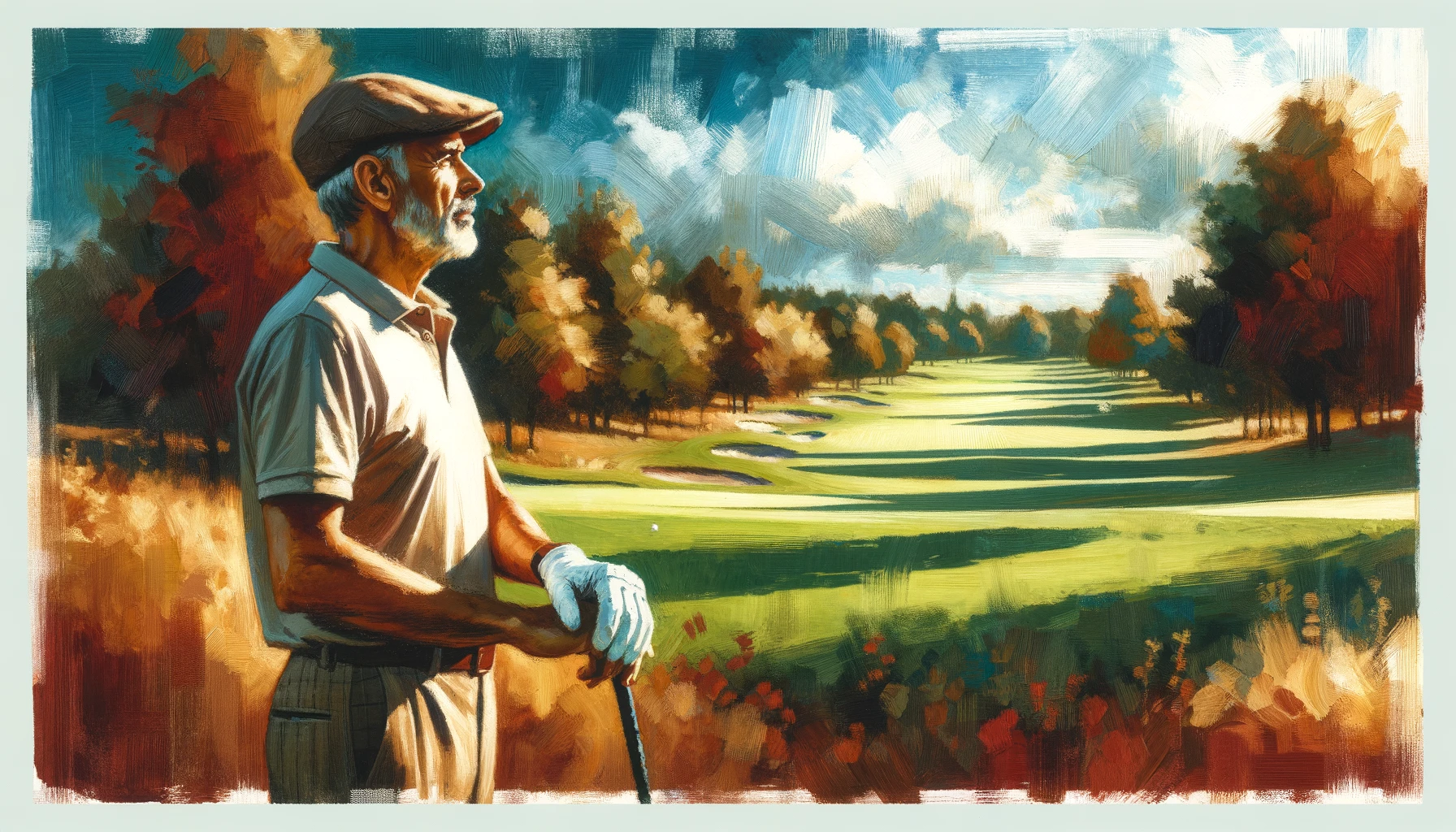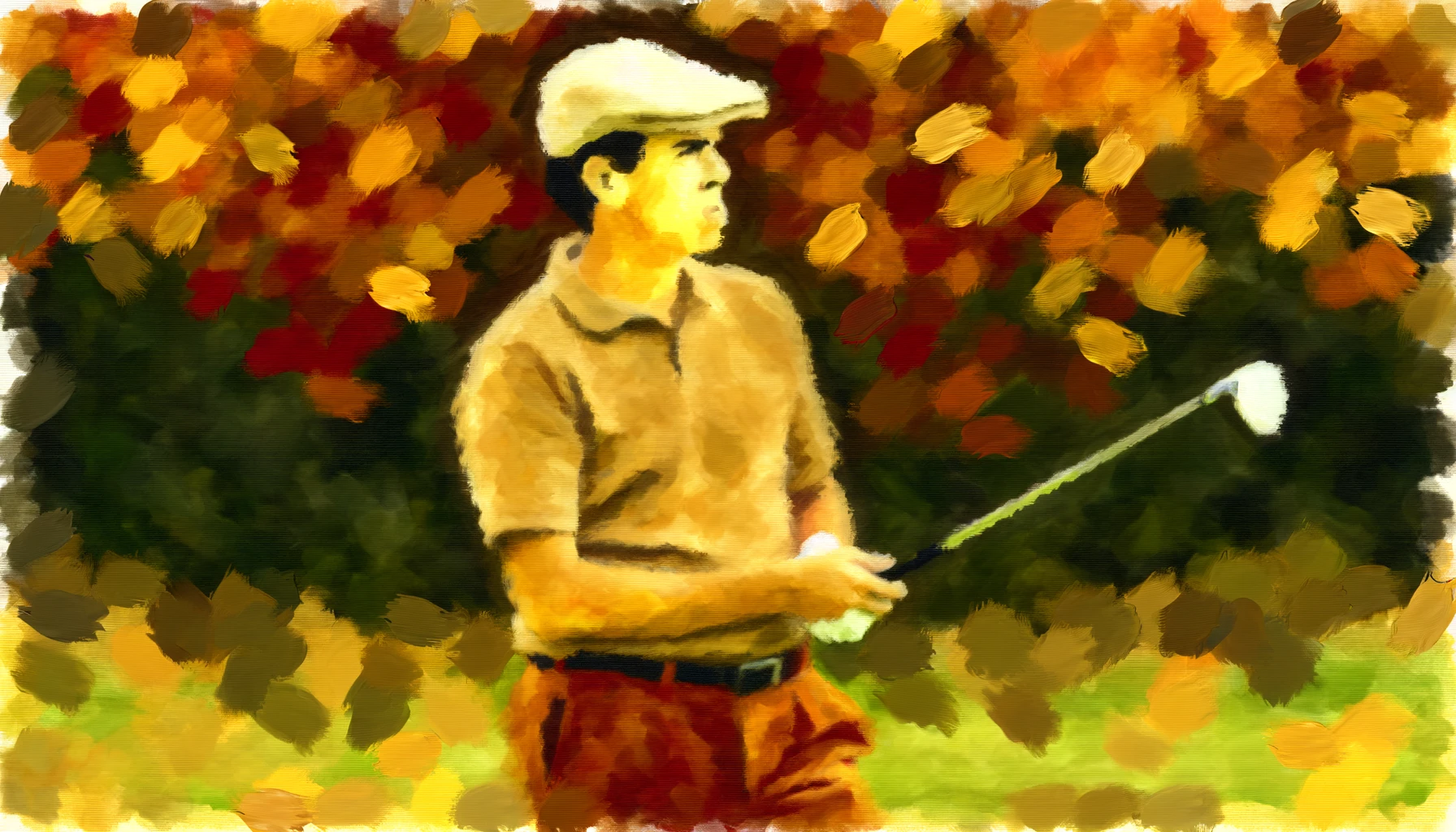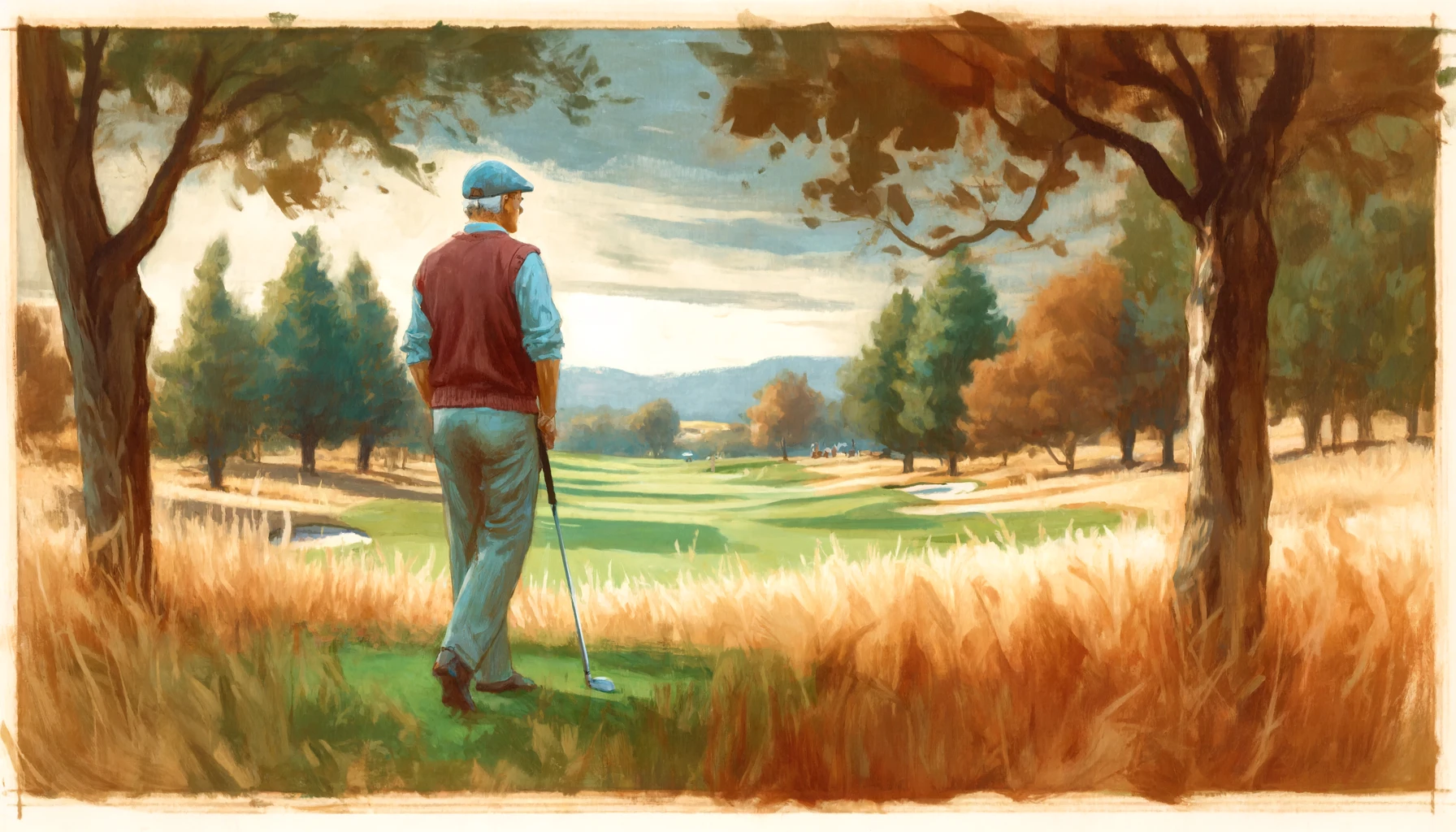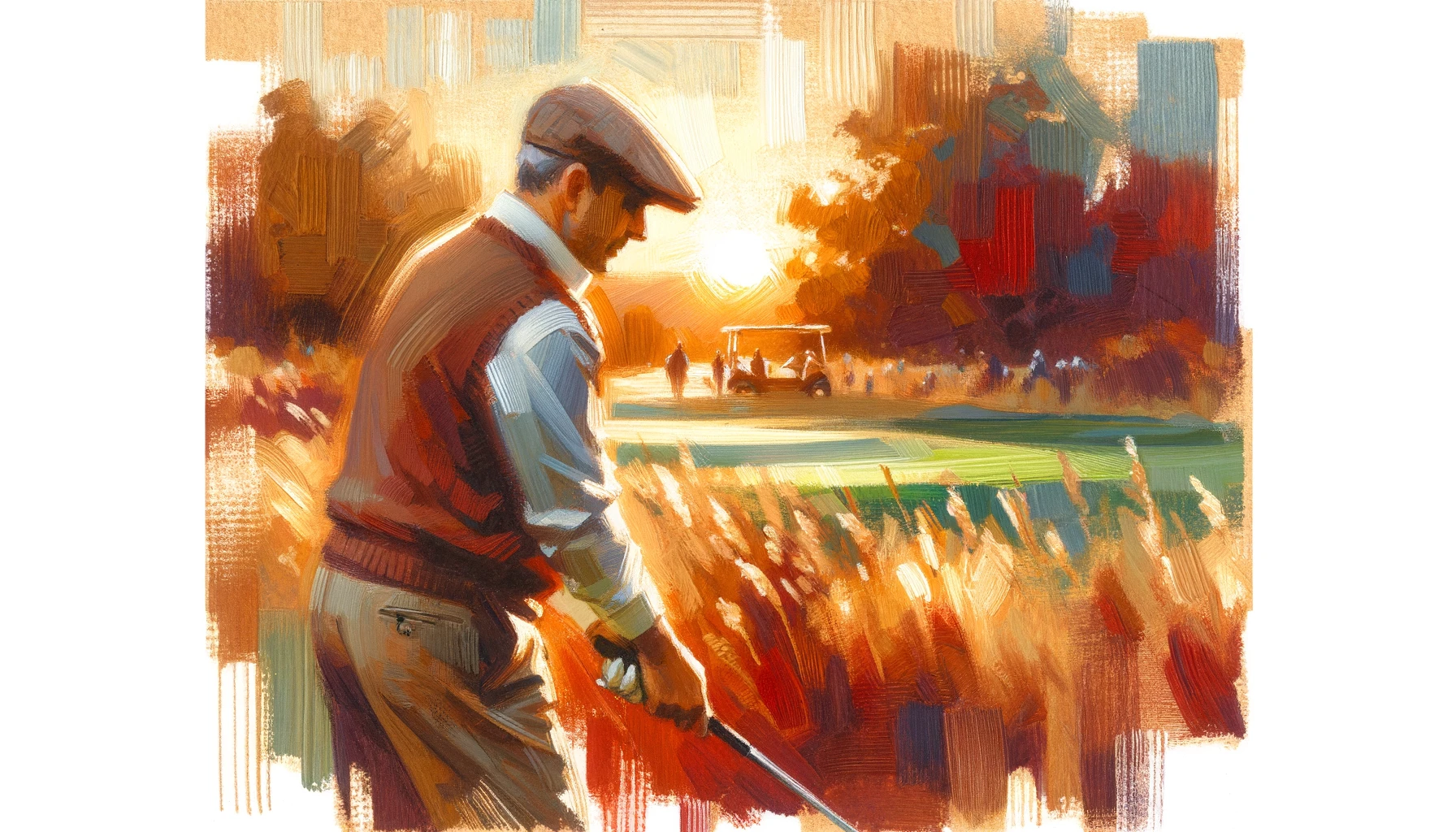Mastering Golf: Physical Conditioning and Flexibility Secrets Revealed
Looking to elevate your golf game? Embracing physical conditioning and flexibility could be the game-changer you've been searching for. This article sheds light on the pivotal role of strength training and advanced mobility in enhancing your swing, preventing injuries, and ensuring a consistent performance on the golf course. Whether you're a weekend warrior aiming for fairway mastery or a seasoned golfer looking to fine-tune your game, delve into our expert tips and transform your approach to golf. For those in a hurry, don't miss the key takeaways and FAQ section at the bottom of the article.
Have you ever felt like your golf game was just a few tweaks away from greatness? If you're nodding your head, let me start by saying, it's not your fault. The golf world is flooded with advice and gadgets promising quick fixes, but often, they just add to the confusion and keep you from unlocking your true potential. It's okay to feel stuck; it's a step towards seeking genuine improvement.
The truth is, the big golf brands and mainstream media want you to believe that the secret to golfing success lies in the latest equipment or some mystical, natural talent. I'm here to call their bluff. Success in golf, like in any sport, comes down to the basics: physical conditioning and flexibility. It's not about the fancy clubs in your bag or the logo on your shirt; it's about how you prepare your body and mind for the game.
You've probably suspected for a while now that there's more to golf than what the ads and the glossy magazine covers tell you. And you're right. The real game changer is a solid foundation in physical conditioning and advanced flexibility. This isn't just about hitting the ball farther (although that's a nice bonus); it's about transforming your entire approach to the game.
So, if you've dreamt of effortlessly gliding through the fairways, outdriving your buddies, and doing it all with a smile, you're in the right place. Let's embark on this journey together and unlock the secrets to becoming a weekend warrior who dominates the course, not through sheer luck or expensive gear, but through the power of physical conditioning and flexibility.
 A serene sunrise session: unlocking the power of flexibility on the green.
A serene sunrise session: unlocking the power of flexibility on the green.Discovering the Path to Golfing Excellence
My golfing journey began like many others, with casual weekend rounds and the occasional after-work practice session. Despite my passion, my performance plateaued, leaving me frustrated and stuck in a cycle of inconsistency.
Determined to break through, I embarked on a quest for improvement, diving into the latest golfing manuals, videos, and training aids. Yet, despite my efforts, significant progress remained elusive, and my dream of becoming a confident, skilled golfer seemed more distant than ever.
The turning point came when I discovered the transformative power of physical conditioning and flexibility. Realizing that technical skill alone was not enough, I began to integrate targeted exercises into my routine, focusing on building the strength and mobility essential for a powerful, precise swing.
Embracing this new approach, I developed a comprehensive training framework that balanced golf-specific exercises with general physical conditioning. This holistic strategy not only enhanced my physical capabilities but also fostered a deeper understanding of the game's nuances.
The results were profound. Not only did my golf game improve dramatically, but I also achieved a level of physical fitness and mental clarity I had never experienced before. This journey transformed me from a weekend golfer into a confident player with a deep love for the game and a commitment to continual improvement.
The Foundation of Physical Conditioning
When we talk about golf, the conversation often veers towards technique, clubs, and even the latest gadgets meant to improve your game. However, the foundation of a truly great golfer lies in something far more fundamental: physical conditioning.
Understanding the Role of Strength in Golf
Golf might not seem like a sport that demands a lot of physical strength at first glance. After all, how much power do you need to swing a club? As it turns out, quite a bit. The strength of your swing doesn't just come from your arms; it comes from your core, your legs, and even your feet. The ability to drive the ball long distances across the fairway is directly linked to the power generated by these muscle groups.
Key Muscle Groups for Golfers
For golfers looking to improve their game, focusing on the following muscle groups can provide significant benefits:
- Core: Stability and power in your golf swing start here. Strengthening your core can lead to more controlled and powerful swings.
- Glutes and Legs: These muscles help generate force during the swing. Strong legs and glutes contribute to better balance and power.
- Shoulders and Arms: While not the primary source of power, strong shoulders and arms are vital for control and consistency in your swing.
- Back: A strong back supports your swing and can help prevent injuries.
Building a Golf-Specific Fitness Routine
A golf-specific fitness routine should focus on strength training that enhances these key muscle groups while also incorporating exercises that improve overall flexibility and balance. Here are a few exercises to consider:
- Squats and Lunges: For leg strength and stability.
- Planks and Russian Twists: To build core strength.
- Shoulder Presses and Dumbbell Rows: For arm and shoulder strength.
- Yoga and Pilates: Excellent for flexibility, balance, and core strength.
By integrating these exercises into your routine, you'll not only see improvements in your golf game but also in your overall health and well-being. Remember, the journey to becoming a better golfer starts off the course, with the dedication to physical conditioning and flexibility.
 Embracing flexibility: the weekend golfer's journey to a better game.
Embracing flexibility: the weekend golfer's journey to a better game.Advanced Flexibility for the Modern Golfer
In golf, flexibility can often be the difference between a good shot and a great one. Advanced flexibility isn't just about being able to touch your toes; it's about ensuring your body can handle the complex, dynamic movements involved in a golf swing without risk of injury.
The Importance of Flexibility in Golf
Flexibility enhances your range of motion, allowing for a fuller swing and greater club head speed at impact. This not only increases the distance you can drive the ball but also improves accuracy since your body can move freely, without restriction.
Mobility Exercises for Hips, Shoulders, and Back
To improve your golf game, focus on flexibility exercises that target the hips, shoulders, and back. These areas are crucial for a fluid, powerful swing:
- Hip Flexor Stretches: Essential for maintaining lower body flexibility and preventing hip tightness.
- Shoulder Mobility Drills: Improve your upper body's range of motion for a more extended swing.
- Spinal Rotations: Enhance the flexibility of your back, crucial for achieving a full swing.
The Impact of Flexibility on Your Swing
Incorporating these exercises into your daily routine can dramatically impact your swing. You'll notice not just an increase in the distance of your drives but also a more effortless swing, reduced risk of injury, and greater overall enjoyment of the game.
By dedicating time to advance your flexibility, you're investing in your ability to play better, longer, and with more joy. Remember, flexibility is not a destination but a journey that can significantly enhance your performance on the golf course.
Dynamic Warm-Up Routines
Before teeing off, it's crucial to get your body prepared for the game ahead. Dynamic warm-up routines are designed to prepare your muscles for the movements they'll perform on the course, reducing the risk of injury and improving your overall performance.
The Key to Injury Prevention
A proper warm-up does more than just loosen your muscles; it increases your heart rate, improves blood flow to your muscles, and mentally prepares you for the game. By incorporating dynamic stretches that mimic the movements of golf, you prime your body to perform at its best.
Sample Warm-Up Routine for Golfers
Here's a simple yet effective dynamic warm-up routine to get you started:
1. Arm Circles: Begin with small circles, gradually increasing the size to warm up your shoulder joints.
2. Leg Swings: Hold onto your golf cart or a club for balance, and swing your legs forward and backward to loosen up the hips.
3. Torso Twists: With your feet shoulder-width apart, twist your torso from side to side, engaging your core and warming up your spine.
4. Squats: A few body-weight squats will warm up your legs, glutes, and lower back, all crucial areas for a strong golf swing.
Integrating Warm-Ups Into Your Golf Ritual
Making a dynamic warm-up part of your golfing routine can have a significant impact on your game. Not only can it help prevent injuries, but it also sets the tone for a day of successful, enjoyable golf. Remember, the goal of a warm-up is to prepare your body and mind for the round ahead, so take it seriously, but don't forget to have fun with it.
By adopting these simple warm-up exercises, you'll find yourself more flexible, more prepared, and ultimately, more successful on the course. Welcome to a smarter way to start your game.
 Finding balance and strength in the golden years of golf.
Finding balance and strength in the golden years of golf.From Weekend Warrior to Fairway Master
The journey from being a weekend golfer to becoming a fairway master is not just about lowering your handicap; it's about transforming your approach to the game and how you view your own capabilities. It's a journey of personal improvement, discipline, and, most importantly, enjoyment of the sport.
Putting It All Together
Integrating physical conditioning, flexibility, and dynamic warm-ups into your routine is the first step in this transformation. But it's not just about the physical aspects; it's also about mindset. Understanding that golf is a game of patience, strategy, and constant learning is key. Each round is an opportunity to learn something new about the game and about yourself.
Tips for Maintaining Progress
1. Set Realistic Goals: Keep track of your progress and set achievable goals for yourself. This could be improving your handicap, mastering a particular shot, or even just playing more regularly.
2. Practice with Purpose: Make sure your practice sessions are focused and productive. Work on specific areas of your game that need improvement, and don't be afraid to seek advice from more experienced golfers or professionals.
3. Stay Patient and Positive: Progress in golf can sometimes be slow, and there will be days when nothing seems to go right. It's important to stay positive and remember that every golfer has good days and bad days.
Expanding Your Social Circle Through Golf
Golf is not just a solo journey; it's a social sport. By participating in local tournaments, joining golf clubs, and engaging with the golfing community, you can expand your social circle. Sharing experiences, tips, and challenges with fellow golfers can enrich your experience and open doors to new friendships and opportunities.
The transformation from a weekend golfer to a fairway master is a rewarding journey that goes beyond the scorecard. It's about embracing the game, continuously seeking improvement, and enjoying the camaraderie that comes with it. Welcome to the fairway mastery blueprint, where every round is a step towards becoming the best golfer you can be.
Conclusion
Embracing the journey of improvement in golf is about much more than just the technical aspects of the game. It's a holistic approach that encompasses physical conditioning, mental preparation, and the social aspects of golfing. As you continue on this path, remember that every swing, every round, and every moment on the course is a step towards becoming not just a better golfer, but a more fulfilled individual.
Embracing the Journey of Improvement
The path to becoming a fairway master is continuous and ever-evolving. With each game, you'll discover new challenges to overcome and new joys to be found in the sport. The key is to embrace the journey, with all its ups and downs, as each experience contributes to your growth as a golfer and as a person.
The Continuous Path to Mastery
Mastery in golf, as in life, is not a destination but a journey. There will always be new techniques to learn, new challenges to face, and new goals to achieve. Stay curious, stay dedicated, and most importantly, enjoy the game. The joy of golf lies not just in the victories, but in the pursuit of improvement and the camaraderie shared with fellow golfers.
Invitation to Join the Golfer's Growth Community
As you embark on this journey, remember that you're not alone. The golfer's growth community is a vibrant and supportive network of players at all levels of the game, all sharing the same passion and pursuit of mastery. Whether you're looking for advice, encouragement, or just a group to share your golfing adventures with, this community is here for you.
Thank you for joining me on this journey. Here's to many more rounds, many more lessons, and endless enjoyment on the course. After all, what more could we ask for?
 Meditation and movement: the path to peak golf performance.
Meditation and movement: the path to peak golf performance.Key Takeaways
To transform your golf game through physical conditioning and flexibility, remember:
- Strength Training: Focus on muscles most used in golf, such as the core, glutes, legs, shoulders, and back.
- Advanced Flexibility: Engage in exercises targeting the hips, shoulders, and back to improve your swing and prevent injuries.
- Dynamic Warm-Ups: Incorporate routines before playing to prime your body for the game, enhancing performance and preventing injury.
FAQ: Physical Conditioning and Flexibility
What is physical conditioning and why is it important for golfers?
What is physical conditioning and why is it important for golfers?
Physical conditioning encompasses exercises that enhance overall fitness, crucial for golf performance. It includes strength training, core exercises, and aerobic activities that boost endurance, improve muscle strength, and support healthy weight management. For golfers, a well-conditioned body means more powerful swings, better stamina on the course, and a lower risk of injuries.
How does flexibility improve my golf game?
How does flexibility improve my golf game?
Flexibility enhances your range of motion, allowing for a fuller golf swing and reducing the risk of muscle strains and joint pain. It is vital for executing smooth, powerful swings and can significantly impact your performance by improving posture, balance, and muscle coordination.
What are the best exercises for improving flexibility and conditioning for golf?
What are the best exercises for improving flexibility and conditioning for golf?
Incorporating exercises like yoga and Pilates can significantly improve flexibility and core strength. Strength training targeting the legs, core, and upper body, complemented by aerobic exercises like walking or swimming, forms a comprehensive physical conditioning routine. Always warm up before stretching to prevent injury.
You're probably thinking you need expensive equipment to improve your physical conditioning, right?
You're probably thinking you need expensive equipment to improve your physical conditioning, right?
Well, you can achieve effective physical conditioning with minimal or no equipment. Exercises utilizing body weight, such as push-ups, sit-ups, and squats, and simple home equipment like resistance bands, can significantly enhance your strength and flexibility.
Isn't flexibility just for young or naturally flexible golfers?
Isn't flexibility just for young or naturally flexible golfers?
Flexibility benefits golfers of all ages and levels. While genetics play a role in natural flexibility, consistent practice can improve everyone's flexibility over time, leading to better performance and reduced injury risk on the golf course.
How often should I engage in physical conditioning and flexibility exercises?
How often should I engage in physical conditioning and flexibility exercises?
For optimal results, integrate flexibility exercises into your daily routine and engage in physical conditioning exercises at least 2-3 times a week. Consistency is key to improving flexibility, strength, and overall golf performance.
You might think that stretching before playing golf might harm your performance, right?
You might think that stretching before playing golf might harm your performance, right?
Actually, while some studies suggest that pre-event stretching could impact sprint performance, golf requires a different kind of muscle preparation. Dynamic stretches that mimic golf swing movements can warm up the muscles effectively, enhancing performance without risk.
Can flexibility and conditioning exercises reduce back pain?
Can flexibility and conditioning exercises reduce back pain?
Yes, targeted exercises can alleviate back pain by strengthening the core, improving posture, and increasing flexibility around the spine. Regular engagement in such exercises can lead to significant improvements in back health and pain reduction.
What are some common mistakes to avoid while stretching?
What are some common mistakes to avoid while stretching?
Avoid bouncing during stretches, overstretching to the point of pain, and neglecting to warm up beforehand. Such practices can lead to muscle strain and injury. Focus on smooth, steady stretches and listen to your body's limits.
You're probably thinking that as an older golfer, it's too late to improve flexibility and conditioning, right?
You're probably thinking that as an older golfer, it's too late to improve flexibility and conditioning, right?
Well, it's never too late to start. Exercises tailored to older adults, such as gentle yoga and water aerobics, can significantly improve strength, balance, and flexibility, enhancing golf performance and overall well-being regardless of age.















